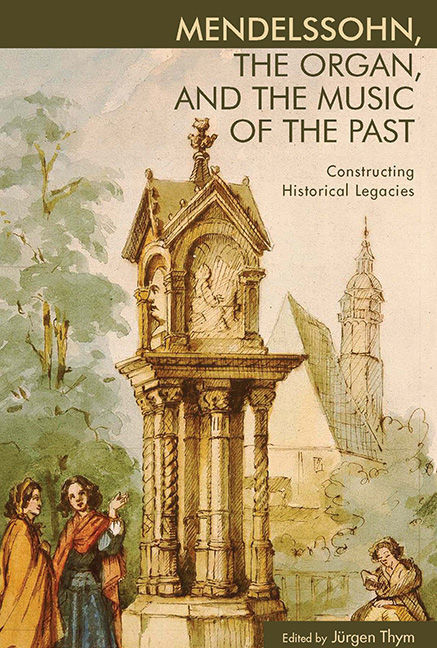Introduction: Of Statues and Monuments
Published online by Cambridge University Press: 14 March 2018
Summary
Felix Mendelssohn grew up in an era and in a region of Europe—namely the German-speaking lands—that liked statues and monuments, not so much for their own sake as because they reflected a deep awareness of history. In fact, he contributed to such monuments—aural, semistaged, and in stone—throughout his life, calling attention to, indeed constructing, historical legacies through his activities. He even confessed his fondness for such monuments in England, when he proposed, perhaps in jest, that Dr. Henry John Gauntlett, an influential figure in British organ reform in the nineteenth century, “ought to have a statue.”
Profuse numbers of statues and monuments were installed in the German states of Europe following the Wars of Liberation 1813–15, and, more prominently, after the foundation of the German Empire in 1871. Celebrating victories in wars and casting them as triumphs in stone had, of course, been a practice since ancient times. (One only needs to walk among Rome's archaeological sites to encounter triumphal arches and columns that reformulated military successes as icons of heroism and greatness for current and future generations.) Just a few years after Mendelssohn was born, the German-speaking people shook off the yoke of Napoleonic empire building and expressed their military victories—albeit accomplished with considerable foreign help, especially from the British and from tsarist Russia—in monuments throughout much of the nineteenth century and well into the twentieth century. Beethoven had participated in such celebrations early on with ephemeral works such as Wellingtons Sieg, oder die Schlacht bei Vittoria, op. 91 (Wellington's victory, or The Battle of Vitoria) and the cantata Der glorreiche Augenblick, op. 136 (The glorious moment), both performed at the Congress of Vienna in 1814–15. Perhaps to atone for his reluctant participation in Napoleon's wars against Prussia and Russia when he was a crown prince, Ludwig I of Bavaria, once he ascended to the throne, would not be outdone in manifesting his Teutonic credentials in marble and granite. The Befreiungshalle (Hall of Liberation) in Kelheim near Regensburg celebrated the military success of the German people in the Wars of Liberation against Napoleon. Conceived in the 1830s, it was inaugurated on the fiftieth anniversary of the Battle of Leipzig in 1863.
- Type
- Chapter
- Information
- Mendelssohn, the Organ, and the Music of the PastConstructing Historical Legacies, pp. 1 - 12Publisher: Boydell & BrewerPrint publication year: 2014

